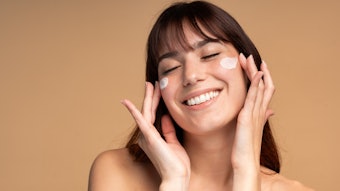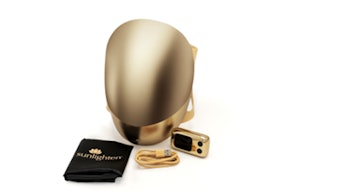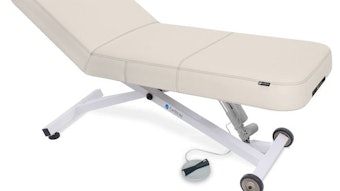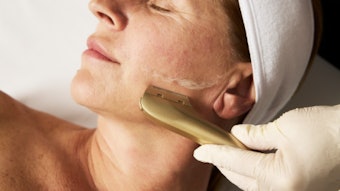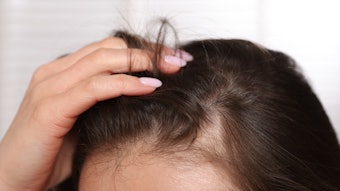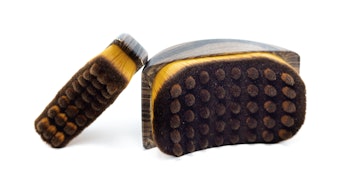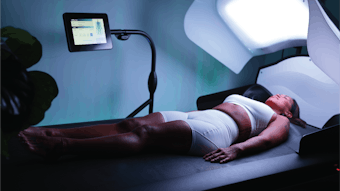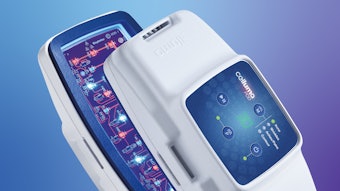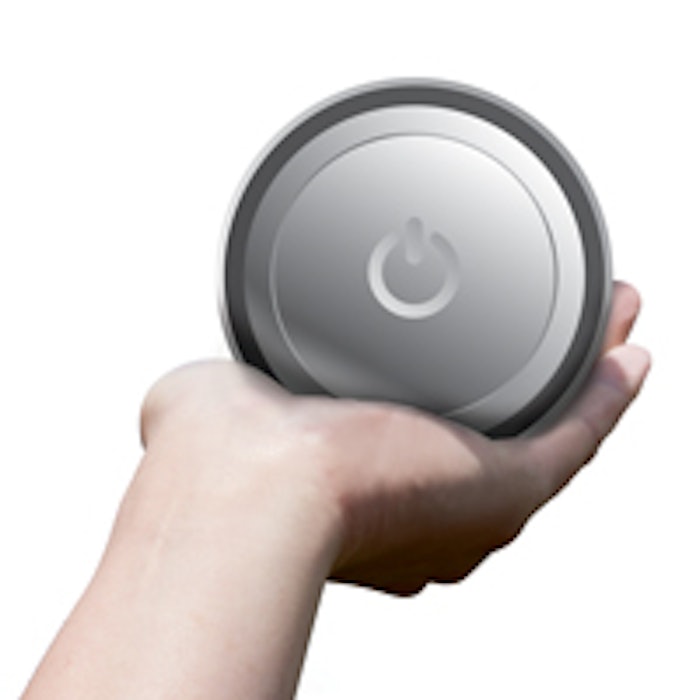
At the same time as many spas are holding off on buying high-priced equipment with questionable results due to the current state of the economy, many spa clients are intrigued by the new hand-held devices that are popping up on store shelves and beauty websites. Whether the machines are meant to provide LED, laser hair removal or deep pore cleansing, the bottom line is that many claim to replicate the services that are often provided at the spa, and there is a fear in the industry that spas may lose business to this trend. The truth of the matter is, however, that spas can benefit from at-home hand-held devices financially, and spa professionals can also work with this trend to solidify their roles as indispensable advisors and educators in a beauty world that continues to grow and change.
The hand-held trend
There’s no denying that hand-held at-home devices are becoming more and more popular. Client motivation is simple, according to Robb Akridge, PhD, vice president of clinical affairs for hand-held equipment supplier Clarisonic. “Clients are wanting softer, smoother, healthier-looking skin; everyone knows they can’t stop aging, and they want to look as good as they can,” he says. This need, combined with strong marketing persuasion from consumer magazines and websites, is the reason consumers are seeking out a variety of options—including at-home hand-held equipment—to help them attain these goals. So how can spa professionals work to educate consumers about this equipment and, in the process, make this trend profitable for their business? Here are the answers to some common concerns about at-home hand-held technology.
Q: I’m concerned that at-home hand-held equipment is dangerous and delivers technology that should only be handled by professionals. How can I address this with my clients?
“I think the trend is horrible,” says Camille Meyer, owner of TriBeCa Med Spa in New York. “I don’t think these at-home hand-held devices are strong enough to hurt someone, but I don’t think they are going to be effective, either. We have different pieces of equipment for laser hair removal, and it’s important to use the right laser on the right skin tone.”
Richard Foxx, MD, founder and medical director of The Medical & Skin Spa at Hyatt Grand Champions Resort in Indian Wells, California, echoes these concerns: “There’s the potential for side effects; skin damage with lasers. If you’re going to make it effective, you’ve got to be careful about side effects. It’s like buying an over-the-counter medication compared with a prescription medication; one is more powerful and more regulated.”
Although most at-home hand-held equipment is less powerful than its professional counterparts, side effects are always possible, and that is where your role as a spa professional comes in. If some of your spa clients are interested in purchasing and using an at-home hand-held device, it is your job as a skin care expert and advisor to help guide the client into the right decision. This role is one that is becoming more and more prominent as consumers become exposed to new beauty trends every year.
“The role of the spa professional has changed,” explains David Suzuki, president of equipment supplier Bio-Therapeutic, Inc. “Some think that they shouldn’t tell any secrets to consumers because they want them to come back and get the magic from them. This is a role from the past. The future role is that of a coach and mentor; someone who strategizes with clients and helps them understand skin care,” he says.
A perfect example of this role is in how Meyer would handle the hair removal dangers she refers to earlier. “If a client with a darker skin tone came to us and had already purchased an at-home hand-held hair removal device, we would advise them to return it and figure out a better way to address their hair removal needs. If it was someone with a lighter skin tone, we would support them trying it, and would help them with questions,” she says. As long as you act as an advisor to your clients, you—and your spa—will remain an active part of their lives. As skin care products and devices become more and more complex, clients will need your guidance more than ever.
Q: Am I going to lose business because this equipment works to replicate the results of spa services?
The short answer: probably not. The reason for this is because many of the consumers who seek out at-home equipment solutions are not currently spa clients, says Giora Fishman, vice president of Radiancy, Inc., an equipment supplier that provides machines to spas and hand-held at-home solutions to consumers. “It’s a different clientele and demographic. The majority of paying consumers prefer at-home options rather than going to a spa. Those at-home options do not erode the business of professionals because they go to markets that consist of consumers who don’t go to the spa.”
Jane Aransky, owner of La Residencia Spa in Newton, Massachusetts, believes that the results just can’t compete with those that can be obtained through spa visits. “I’ve tried to use them myself and very shortly give them up because of forgetfulness or laziness. The results are slow and people get discouraged easily. I don’t think hand-held devices are in any way competitive with spas.”
Pat Lam, co-founder of Skin Care Consultants, agrees, saying, “People will use them for awhile. It’s part of the cycle and it’s good to have cycles that come and go because it reminds clients that they do need professional help.”
The spa professional’s role is not an easy one to replace, according to Suzuki. “When your clients are using technology at home, they will not stop coming to you as a professional any more than a person would stop going to a physician just because the physician gave them advice,” he says. In the end, although you probably won’t lose business to this trend today—whether due to ineffectiveness or demographics—there’s no denying that hand-held equipment is a trend that promises to evolve and become a permanent part of future clients’ skin care regimens.
Q: If this trend isn’t going away, how can I work with it in my spa?
“You shouldn’t be afraid; you should supply hand-held at-home equipment to clients, otherwise they will get them somewhere else. You should embrace change, move with it and see that this is what the consumer wants. The professional needs to get onboard,” says Suzuki.
Embracing at-home hand-held equipment that you’ve researched, used and fully support can keep that retail cash in your spa and not at a beauty discount website. Sandra Donovan, owner of Donovan’s Serenity & Wellness Spa in Alpena, Michigan, has enjoyed a significant retail boost from offering hand-held technology in her spa by mastering the way to work with it in a spa setting. “We emphasize the need for training and knowledge, and we are able to provide repair services if clients have problems with the equipment. We do a lot of business,” she says.
Part of the secret of her success is using the device during treatments. “We use it in our facial room, which opens the door to talk about the effectiveness of the device and how it works. We do this during every facial, and make sure clients have a brochure about the device when they leave,” says Donovan, who also offers a 10% discount on skin care products with each device purchase to try to compete with lower prices that can be found on the Internet and in mass-market venues.
Akridge also believes that incorporating hand-held equipment into spa treatments can result in a stronger, not weaker, rapport between clients and spa professionals. “Spa professionals can use hand-held devices during facials and sell them to clients in order to maintain their skin health and have an active role in their skin care. They help clients’ skin look better. Instead of chasing clients away, it’s strengthening their relationship with you.”
The bottom line, says Donovan: “Encourage the support of local businesses and work hard at providing customer service. Our clients know we’ll stand behind our retail and will be there if they have questions.”
Be indispensable
“There’s never going to be a shortage of consumers and professionals wanting new technologies and methods to look and feel better,” says Suzuki. “Hand-held tools are a thing of the future and, in the end, they will be in consumers’ hands.” It is up to you to define your role in this changing industry.
“When it hits the market, you have to deal with it,” Donovan advises. “We’ve battled it for so long ... it’s diversion; it’s here and it’s here to stay.” And dealing with it often means staying focused on what your clients want. Do your research on the various types of at-home hand-held equipment that are being offered to consumers, and make yourself comfortable with the equipment’s benefits and shortfalls. If you find a device you believe will offer benefits to your clients, consider retailing it in your spa and using it in your treatments. Educate your clients and act as their guide, and your role as an indispensable skin care expert and advisor will remain secure through all the changes the future will bring to the spa industry.
